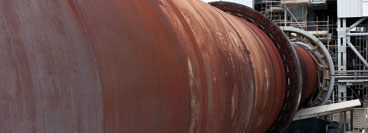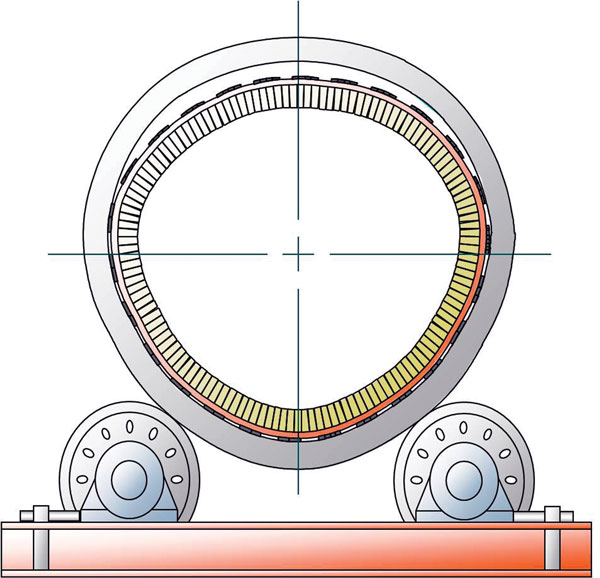Kiln shell flex analysis
Shell flexing measurements determine the amount of flexing taking place in a rotating kiln shell. The shell is flexible and tends to widen at the sides and flatten across the top. The more the shell is allowed to widen and flatten, the higher the shell flexing. If the shell fits tightly inside the tyre, flexing will normally be low. Conversely, a loose-fitting tyre will allow the kiln to sag more across the top and widen further on the sides, resulting in higher shell flexing. Too small a clearance constricts the kiln shell and can lead to refractory failure, as is discussed in this report by V Murali and P Kalyan, Phillips Kiln Services Pvt Ltd, India, & Walter Gebhart, Phillips Kiln Services, USA.

The main reason for measuring shell flexing is to maximise the life of the kiln’s refractory lining. When shell flexing becomes excessive, the refractory begins to crush and will require premature replacement. Shell flexing depends on various factors mentioned below.

Figure 1: diagram of a flexing kiln shell.
Note the wider shape at the sides
and flattening at the top
Air gap between the filler bar/ chair pad
OD and tyre ID
As the air gap between the chair pad outer diameter and the tyre inner diameter increases, and the shell will try to flatten more at the top and bulge towards the three o’clock and nine o’clock position, resulting in high shell flexing (see Figure 1).
Tyre thickness
The kiln shell needs to be adequately supported by the tyre to have optimum shell flexing. As the tyre thickness reduces the beam strength of the tyre will decrease. Therefore, the tyre will not be able to support the kiln shell adequately, resulting again in high shell flexing.

